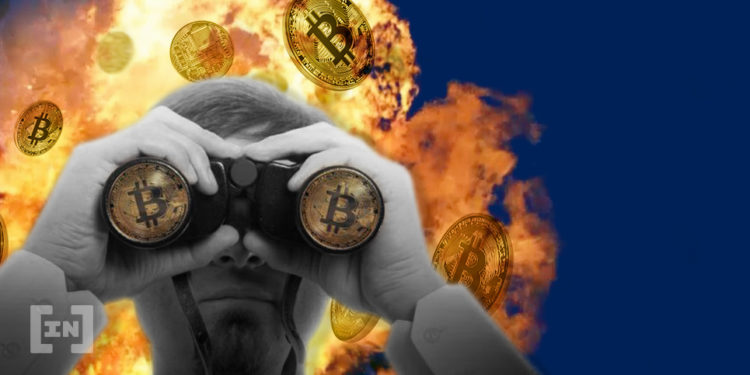Bitcoin is an illusion, a mass hallucination, so one hears. It’s just numbers in cyberspace, a mirage, insubstantial as a soap bubble. Bitcoin is not backed by anything other than the faith of the fools who buy it and of the greater fools who buy it from these lesser fools. And you know? Fair enough. All this is true.
What may be less easy to grasp is that U.S. dollars are likewise an illusion. They too consist mainly of numbers out there in cyberspace. Sometimes they’re stored in paper or coins, but while the paper and coins are material, the dollars they represent are not. U.S. dollars are not backed by anything other than the faith of the fools who accept it as payment and of other fools who agree in turn to accept it as payment from them. The main difference is that, for the moment at least, the illusion, in the case of dollars, is more widely and more fiercely believed.
In fact, almost all of our U.S. dollars, about 90 percent, are purely abstract — they literally do not exist in any tangible form. James Surowiecki reported in 2012 that “only about 10 percent of the U.S. money supply — about $1 trillion of the roughly $10 trillion total — exists in the form of paper cash and coins.” (The number now appears to be about $1.5 trillion out of $13.7 trillion.) There is nothing stopping our banking system from creating more dollars whenever the mood strikes. Of the $13.7 trillion in the M2 money supply as of October 2017, $13.5 trillion was created after 1959—or, to put it another way, M2 has expanded by almost 50 times.
The U.S. dollar is what is known as a “fiat” currency. Fiat is Latin for “let there be,” as in fiat lux, let there be light; hence, fiat denarii, let there be lire, bolivars, dollars, and rubles. The temptation for leaders of nation-states to manufacture money has historically been practically irresistible. One evident result of this wantonness is inflation: The purchasing power of $1 in 1959 is now a little under 12 cents.
The bitcoin blockchain was created, in part, to address this historical weakness. After the 21 millionth bitcoin is mined, in around 2140, the system will produce no more.
Charlatans and thieves will forever try to game the various structures put in place to control and/or account for any monetary system and, indeed, any store of value (see: the crooks of the Panama and Paradise Papers, Bernies Cornfeld and Madoff, the London Whale, LTCM and BCCI, the clever and quiet thieves of treasures from the Gardner Museum in Boston, the 2008 financial crisis and associated bailouts, and the thefts at Mt. Gox, the DAO, and Tether). All stores of value are targets. And using any system of exchange — through fair means or foul — fortunes can and will be made and lost. And yet, surprising as it may sometimes seem, there are enough people acting in good faith to prevent monetary systems from collapsing entirely.
There are a few radical differences between cryptocurrencies and U.S. dollars. For example, the transactions conducted in the bitcoin system are recorded in an unfalsifiable ledger that relies not on the authority of banks or governments, but on the strength of a public computer network that (theoretically, at least) anyone is free to join. Also, again, the supply of bitcoins is ultimately fixed. The anonymity of cryptocurrency is not, perhaps, quite as bulletproof as the anonymity of (unmarked) cash.
Source/More: You Don’t Understand Bitcoin Because You Think Money Is Real
















